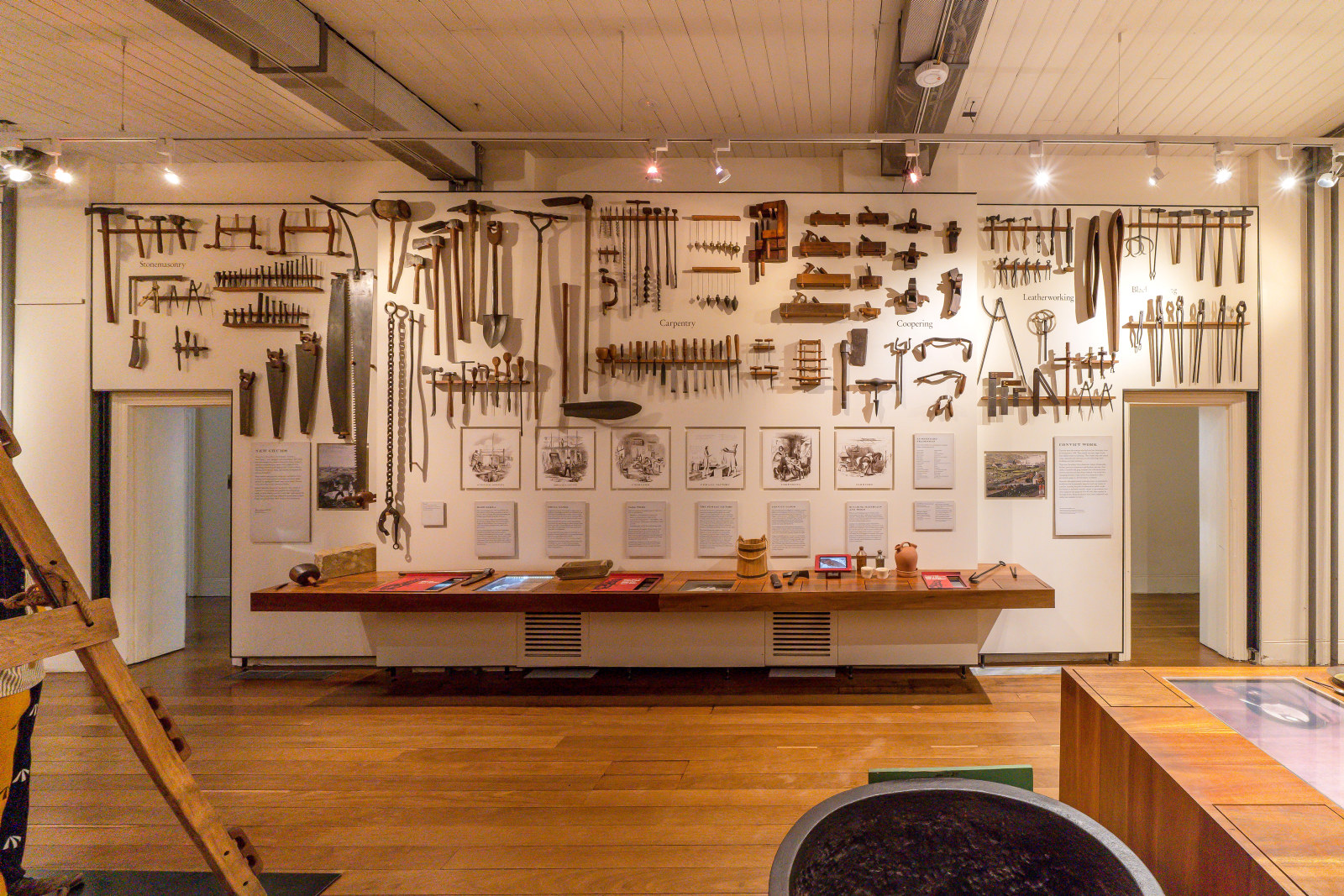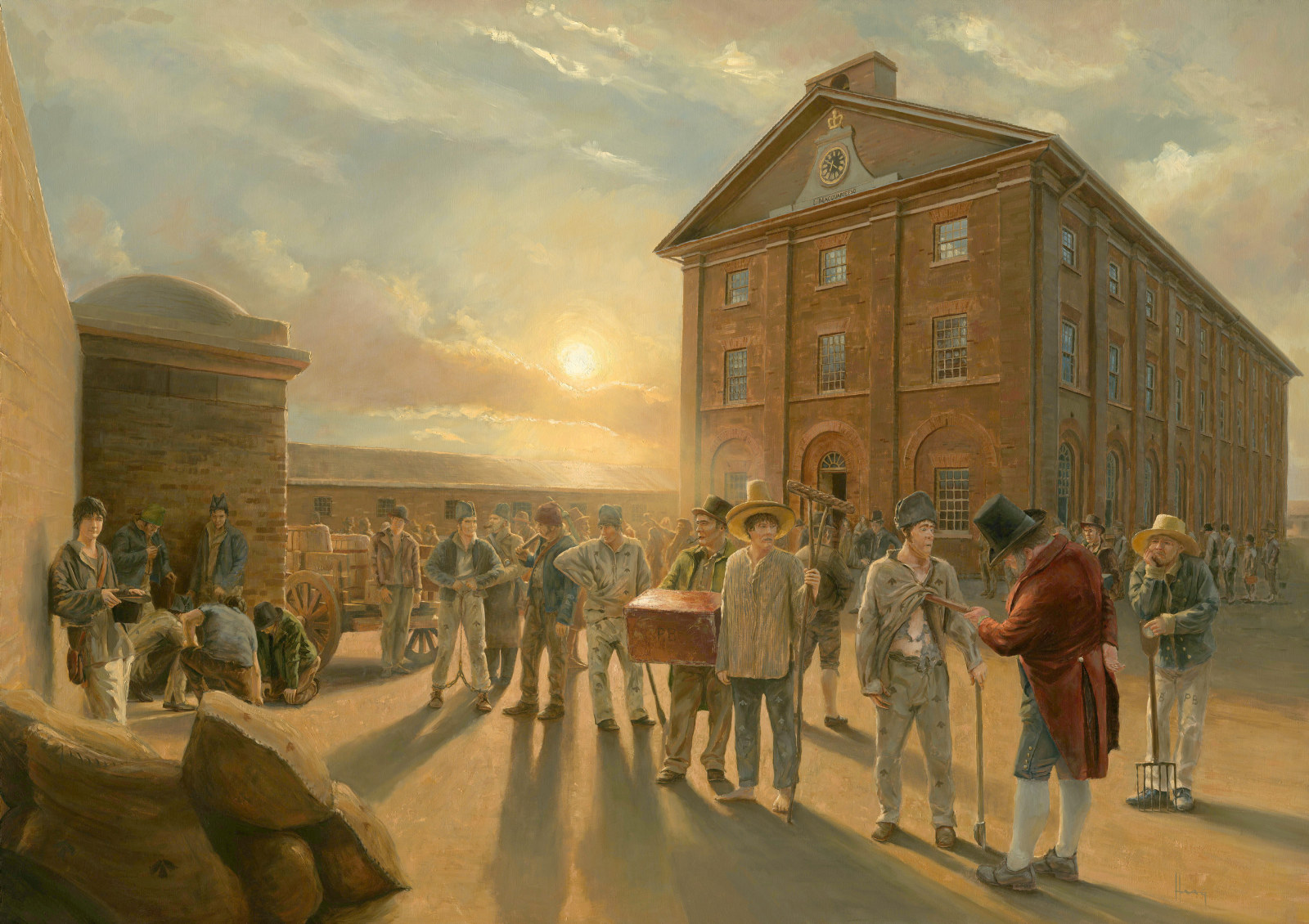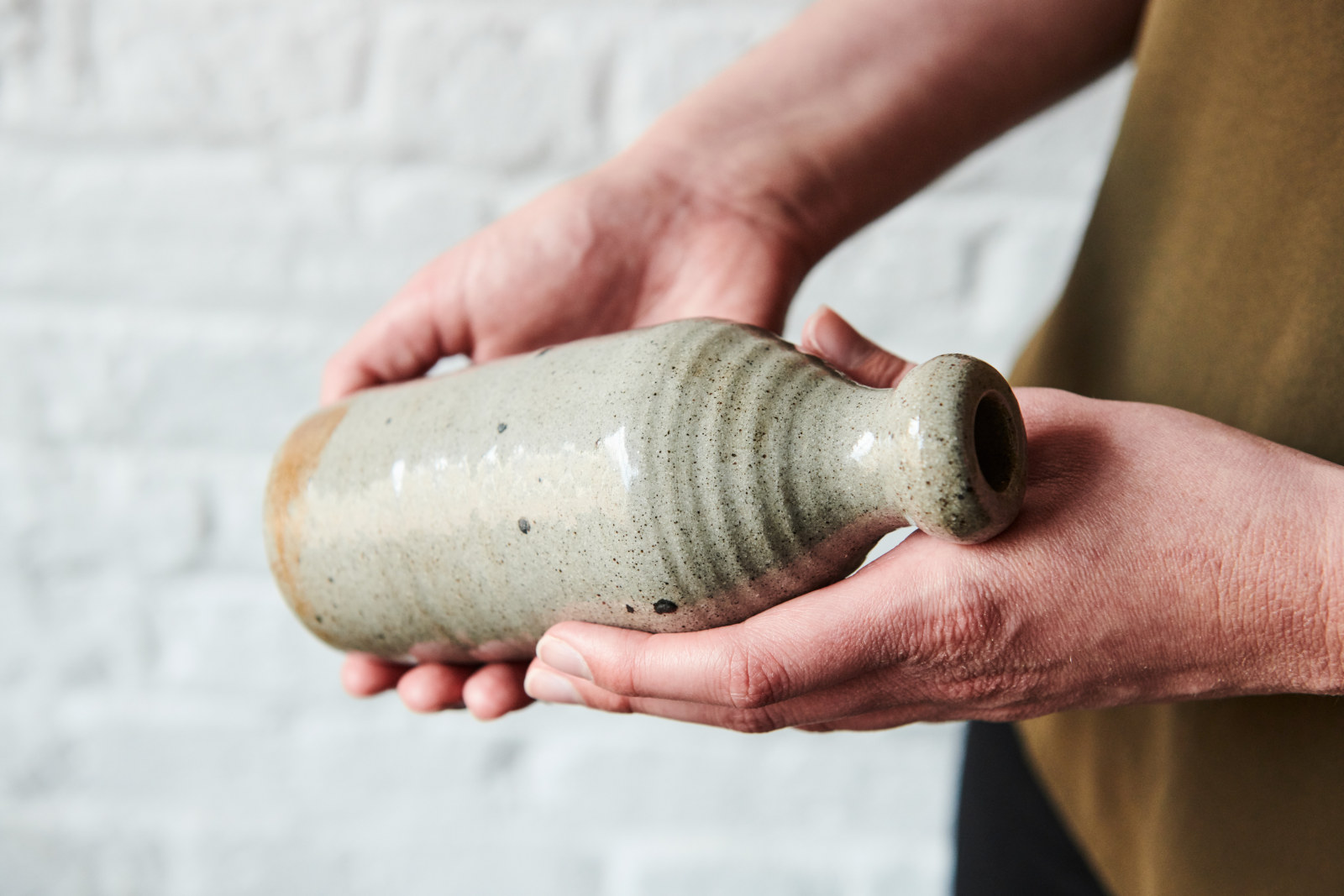Convict Cap
1820s–1840s
A hat was known as a castor or a kelp in the convict 'flash' slang language, and convicts didn't much like the castors the government gave them. This government issue leather convict cap has a brim on either side that could be turned down to protect the wearer from both sun and rain. For shading convict faces from the beating sun, however, they were useless. In winter, convicts preferred woollen caps and for summer they made their own wide brimmed straw hats from cabbage tree palm leaves. Hat theft came with harsh consequences: in 1833 Irishman Robert Reilly received a flogging of 25 lashes at Hyde Park Barracks for stealing a hat from another prisoner; Yorkshireman John Harty received six months in leg irons for the same crime. Despite being impractical and unpopular, the leather caps remained part of the Barracks convict uniform until 1848. It is thought that these caps, which had previously been worn by the military, were supplied to the colony as British army surplus after the Napoleonic Wars.
Are the Caps issued serviceable?
By no means, they are quite useless, & afford no protection to the head from the Sun.
Major George Druitt, 29 October 1819, in Ritchie, Evidence to the Bigge Report, vol 1, 16.
Published on
Related

Convict Sydney
Objects
These convict-era objects and archaeological artefacts found at Hyde Park Barracks and The Mint (Rum Hospital) are among the rarest and most personal artefacts to have survived from Australia’s early convict period

Convict Sydney
Convict Sydney
From a struggling convict encampment to a thriving Pacific seaport, a city takes shape.

Learning resources
Explore our range of online resources designed by teachers to support student learning in the classroom or at home